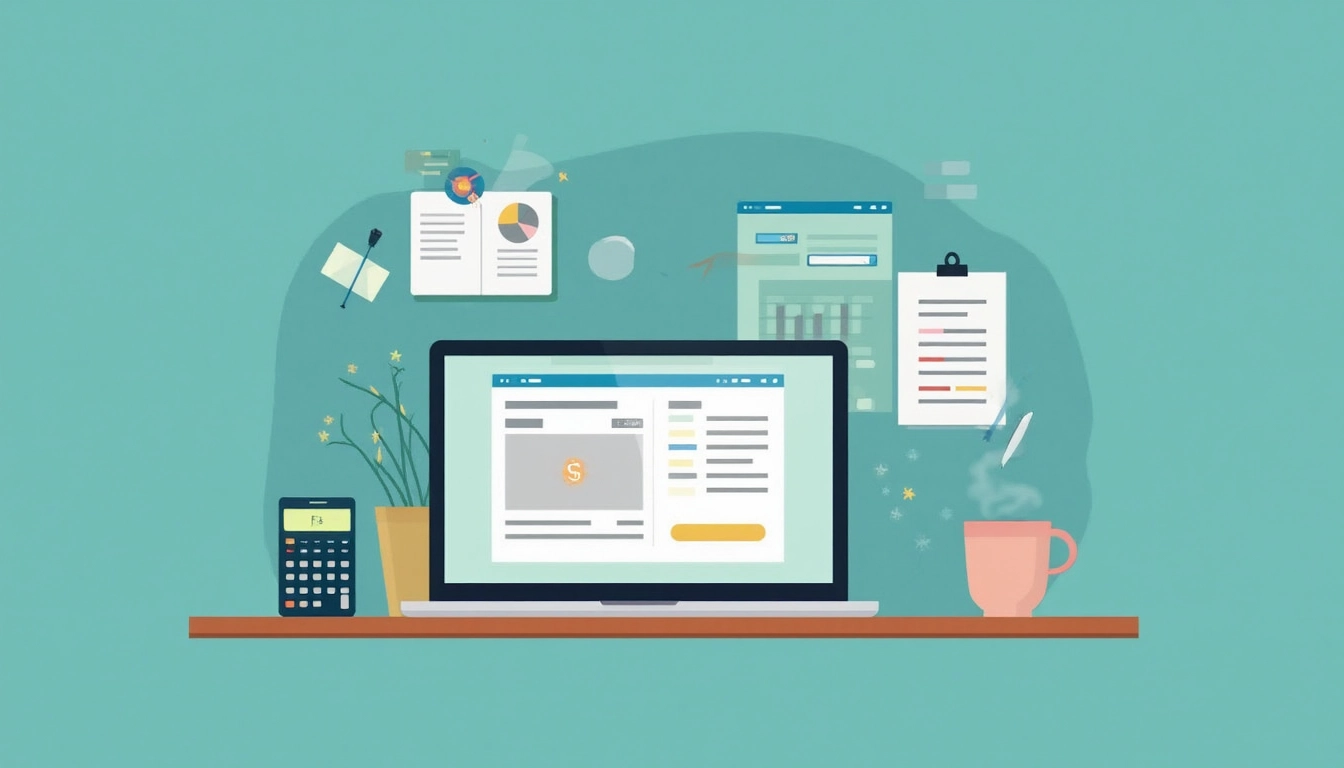
How to Track Your Refund After Filing
After e-filing your tax return, it’s natural to want to know when you can expect your refund. The IRS provides tools to track your refund status, offering transparency and peace of mind.
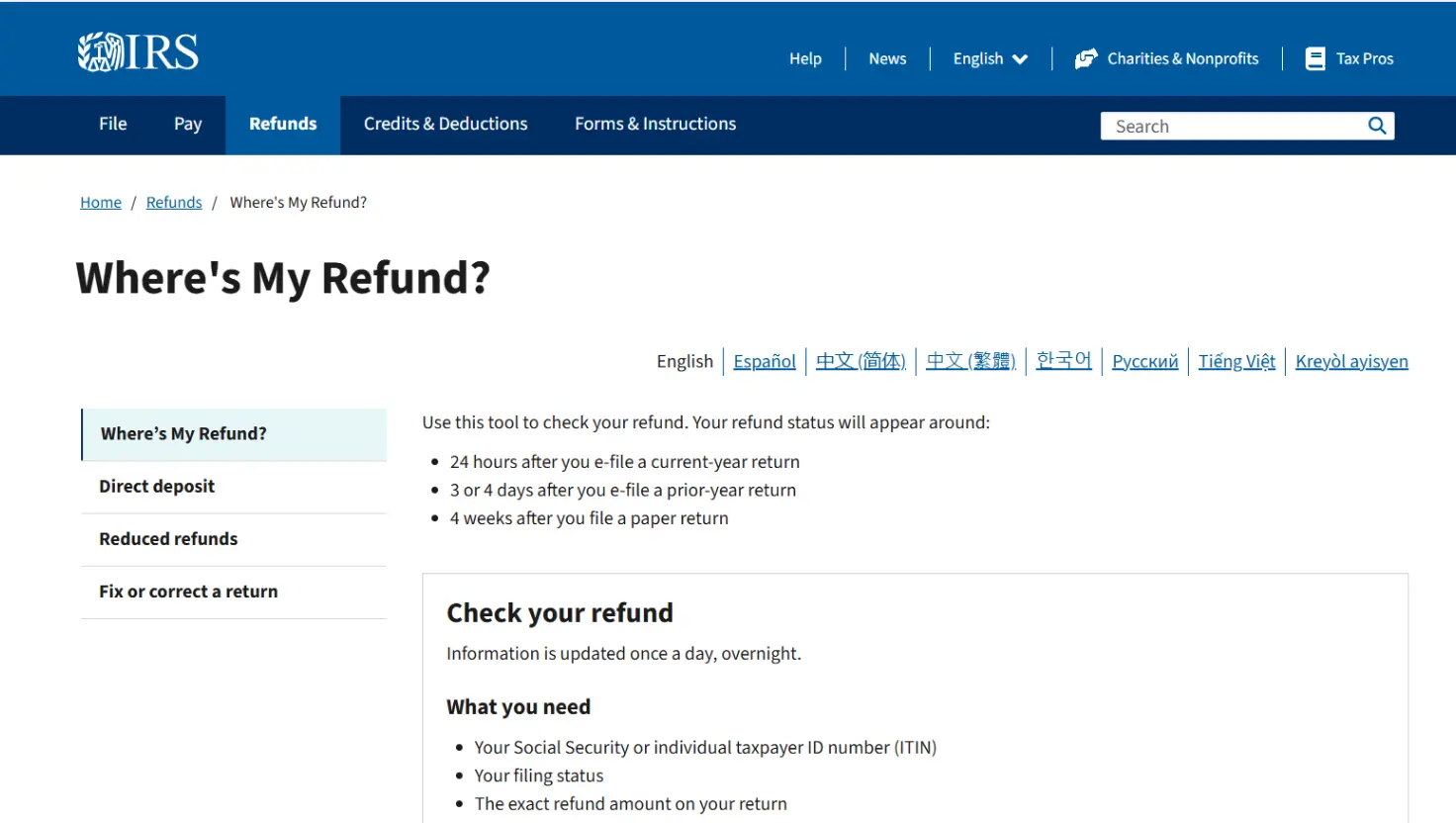
Using the “Where’s My Refund?” Tool
The IRS “Where’s My Refund?” tool is available on the IRS website and as a mobile app called IRS2Go. You can typically access information about your refund within 24 hours after e-filing a current-year return. If you file a paper return, you must wait about 4 weeks for your information to appear in the system.
To use the tool, you’ll need to provide:
- Your Social Security number or Individual Taxpayer Identification Number (ITIN)
- Your filing status (e.g., single, married filing jointly)
- The exact whole dollar amount of your expected refund from your original tax return
The tool will show you whether the IRS has received your return, if your refund has been approved, and when the money is scheduled to be deposited into your account.
IRS Refund Processing Time
The IRS typically acknowledges receipt of your e-filed return within 24 to 48 hours. Historically, more than 9 out of 10 refunds are processed and approved within 21 days of e-file acceptance.
However, several factors can affect the timing of your refund, including errors in your tax return, incomplete information, or identity theft.
If you claimed the Earned Income Tax Credit (EITC) or the Additional Child Tax Credit (ACTC), the IRS is required to hold your entire refund until mid-February.
Direct Deposit vs. Paper Check
Choosing direct deposit is the fastest way to receive your refund. You’ll typically receive your refund with direct deposit within 8 to 15 days of e-filing. Financial institutions usually process direct deposit refunds within a few days. If you opt for a paper check, it will take longer to receive your refund, typically about four to six weeks if you mail your return early in the tax season. Direct deposit is also more secure, as there’s no check to get lost.
If it has been at least 21 days since the IRS accepted your return and you haven’t received your refund, you can check the IRS refund schedule or contact the IRS directly for assistance.
What If You Owe Taxes? Payment Options Explained
If you cannot pay your taxes in full by the due date, the IRS offers several payment options to help you manage your tax liabilities. Ignoring the problem can lead to increased penalties and interest, so exploring these options as soon as possible is crucial.
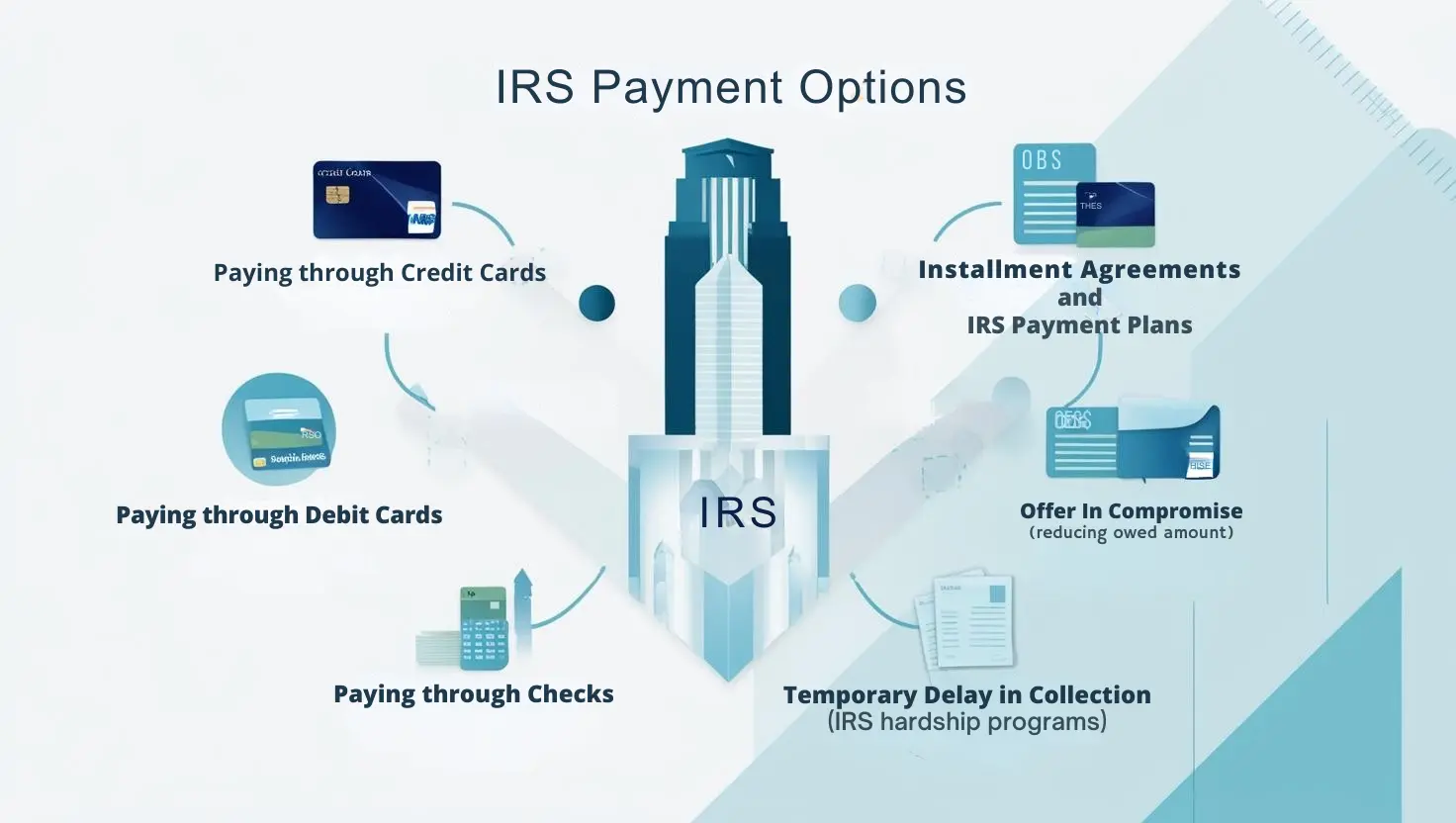
IRS Payment Plans & Installment Agreements
The IRS offers payment plans, including installment agreements, that allow you to pay your tax debt over an extended period. Most taxpayers qualify for a payment plan and can apply for it online.
- Online Payment Agreement (OPA): Individuals who owe $50,000 or less in combined income tax, penalties, and interest, and businesses that owe \$25,000 or less in combined payroll tax, penalties, and interest can apply for a payment plan online. You’ll typically receive immediate notification whether the IRS has approved your payment plan.
- Installment Agreement: If you don’t qualify for the online payment agreement, you can apply for a payment plan by phone or mail using Form 9465, Installment Agreement Request. Installment agreements paid by direct deposit from a bank account or payroll deduction can help you avoid defaulting on the contract.
While an installment agreement is in effect, the failure-to-pay penalty rate is reduced from 0.5% to 0.25% per month. Interest and penalties continue to accrue until the full amount is paid.
Offer in Compromise (Reducing Owed Amount)
An Offer in Compromise (OIC) allows certain taxpayers to settle their tax bill for less than the total amount they owe. Eligibility is based on your ability to pay, income, expenses, and asset equity. The IRS provides an Offer in Compromise Pre-Qualifier tool to help you determine if you are eligible.
Temporary Delay in Collection (IRS Hardship Programs)
If you’re facing financial hardship, you can request a temporary delay in the IRS collection process. If the IRS determines you cannot pay, they may delay collection until your financial condition improves. Penalties and interest, however, continue to accrue until the full amount is paid.
Paying Through Credit Cards, Direct Debit, or Checks
The IRS offers various methods for paying your taxes:
- Direct Pay: Pay online for free from your checking or savings account. You can schedule payments up to 365 days in advance, and receive email confirmation of your payments.
- Electronic Federal Tax Payment System (EFTPS): A free service to pay individual and business taxes online or by phone.
- Credit Card, Debit Card, or Digital Wallet: You can pay online, by phone, or with a mobile device, though processing fees apply.
- Check or Money Order: If you’re paying an income tax liability without an accompanying return, mail a check or money order to the IRS, including Form 1040-V, Payment Voucher. Don’t send cash through the mail.
Explore these options carefully to find the best solution for your financial situation and ensure you meet your tax obligations.
Common Filing Mistakes & How to Avoid Them
Filing your taxes accurately is crucial to avoid delays, penalties, and potential audits. Simple oversights can lead to significant issues, so it’s essential to be meticulous and double-check your return before submitting it.
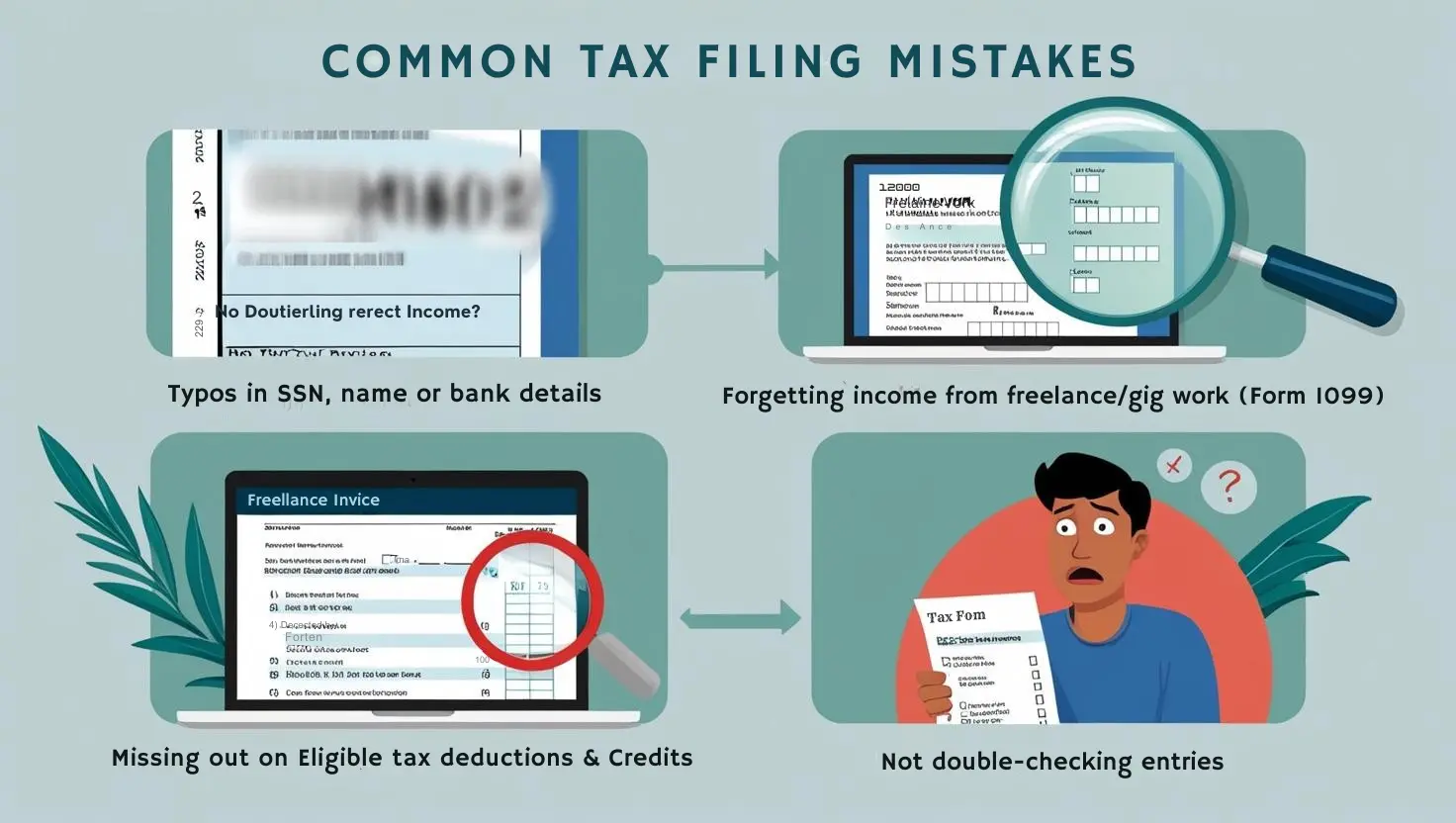
Typos in SSN, Name, or Bank Details:
- Mistake: Incorrectly entering your Social Security number (SSN), name, or bank account details.
- How to Avoid: Each SSN on a tax return should appear exactly as printed on the Social Security card. Likewise, a name listed on a tax return should match the name on that person’s Social Security card. Double-check your postal and email address when you file your income tax return. Double-check that you use the correct routing and account numbers on your tax return if you are due a refund. You could pay too much or too little on your taxes with inaccurate information.
Forgetting Income from Freelance/Gig Work (Form 1099):
- Mistake: Failing to report all sources of income, including income from freelance or gig work reported on Form 1099. One often forgotten income type is interest earned on bank savings accounts and Fixed Deposits (FDs). Also, if you have changed jobs recently, make sure that you report the income earned through your previous employer as well.
- How to Avoid: Ensure you report all income sources, including interest from savings accounts and fixed deposits.
Missing Out on Eligible Tax Deductions & Credits:
- Mistake: Not claiming all eligible tax deductions and credits can significantly reduce your tax liability. You can also miss out on valuable tax credits like the Earned Income Tax Credit and the Child and Dependent Care Credit, which can be costly.
- How to Avoid: Waiting until all forms are in hand will ensure you don’t miss deductions or leave money on the table.
Not Double-Checking Entries Before Submitting:
- Mistake: Failing to thoroughly review the completed form before submission, whether filled manually or online.
- How to Avoid: Mistakes are bound to happen whether you have filled out your forms manually or online. Therefore, it makes sense to check the filled-up form thoroughly to avoid errors. Even if your tax consultant or accountant fills in the details on your behalf, you need to personally check the form to ensure the accuracy of the information.
Being aware of these common mistakes and taking the time to avoid them can help ensure a smooth and accurate tax filing experience.
What to Do If You Made a Mistake on Your Return?
Even with careful preparation, mistakes can happen when filing your tax return. Fortunately, the IRS provides a way to correct errors or omissions by filing an amended return.
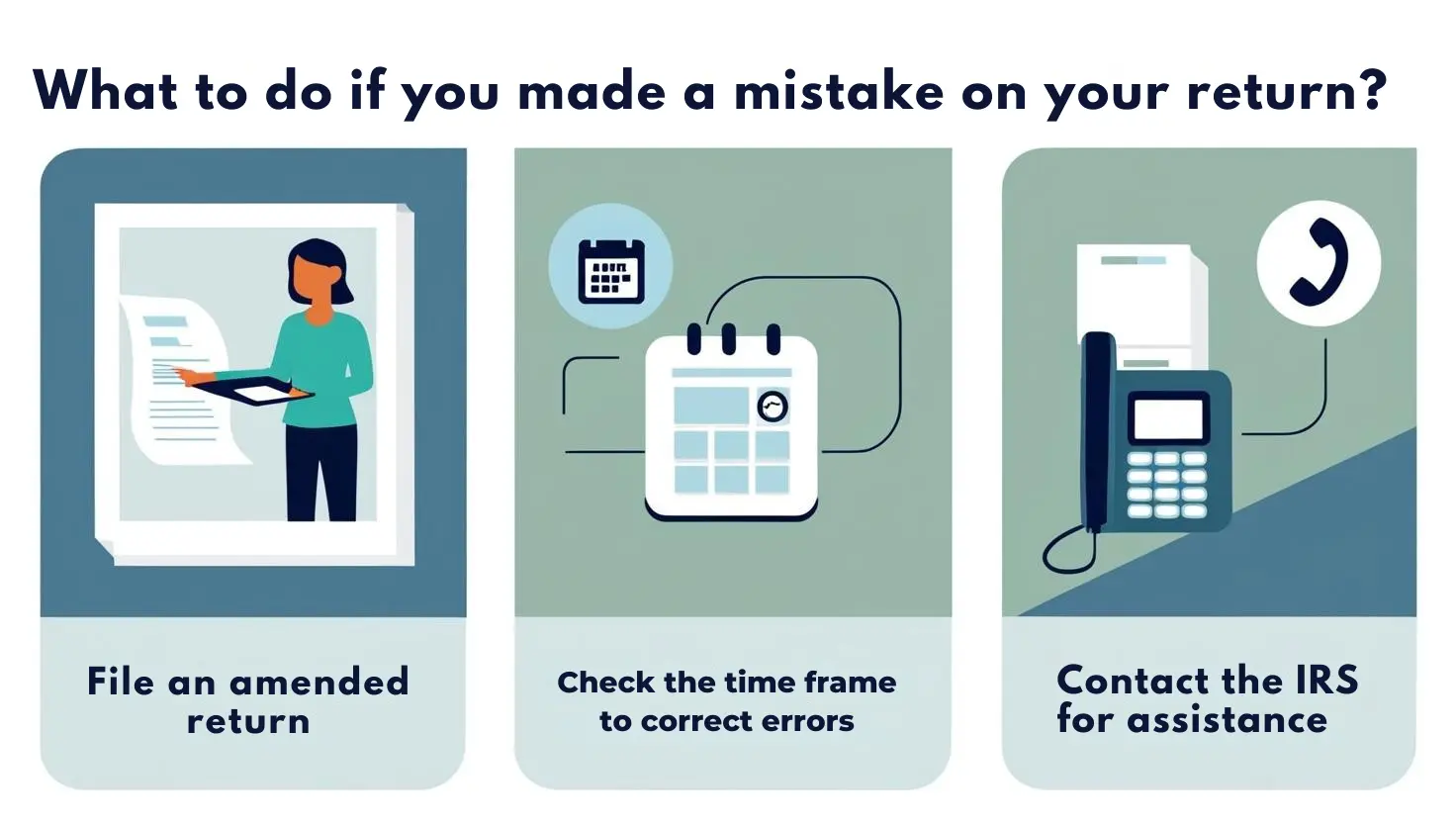
How to File an Amended Return (Form 1040-X)
You’ll need to file Form 1040-X, Amended U.S. Individual Income Tax Return to correct your tax return. This form allows you to change your previously filed Form 1040, 1040-SR, or 1040-NR. You can now file Form 1040-X electronically with tax filing software for the current tax year and the two prior tax years, if you originally e-filed. If e-filing isn’t available or you’re amending an older return, mail Form 1040-X to the address listed in the IRS instructions.
Here’s a general outline of the process:
- Determine if you need to amend your return: Amend if you need to correct your filing status, income, deductions, credits, or dependents. The IRS automatically corrects mathematical errors, so no amendment is necessary in those cases.
- Obtain Form 1040-X: Download it from the IRS website or access it through tax software.
- Gather Necessary Documents: Locate your original return and any new forms, schedules, or documentation supporting the amendment, such as corrected W-2s or 1099s.
- Complete Form 1040-X: Fill in your personal information, details of what’s changed, and your explanation. There are three columns: Column A (shows original return information), Column B (shows difference in amounts), and Column C (shows the corrected amount).
- Submit the Amended Return: E-file or mail the form with any necessary supporting documentation.
Timeframe to Correct Errors
You generally have three years from the original filing deadline of your tax return (including extensions) or two years from the date you paid the tax, whichever is later, to file Form 1040-X.
Contacting the IRS for Assistance
If you have questions or need assistance, you can contact the IRS directly. The IRS provides various online resources and phone assistance to help taxpayers navigate the process.
Filing Taxes Online for Self-Employed & Freelancers
Freelancers and self-employed individuals have specific tax obligations that differ from those of traditional employees. Understanding these obligations and utilizing available resources can help ensure accurate and timely filing.
Tax Obligations for Freelancers & Gig Workers
As a freelancer or gig worker, any income generated through your manual or intellectual skills is categorized under “Profits and Gains from Business and Profession”. This means you are responsible for paying income tax and self-employment tax on your earnings. You must file income tax returns, and you can typically do so using ITR-3 or ITR-4 forms. Selecting the correct ITR form is crucial for e-filing your income tax returns. If your income is more than ₹1 crore, your account books should be audited as per Section 44AB of the Income Tax Act. In this case, you must file the ITR before September 30th. When your turnover is less than ₹1 crore, no audit is required, and the last date for submission of ITR is July 31st.
Estimated Quarterly Tax Payments (Form 1040-ES)
Self-employed individuals are generally required to make estimated tax payments throughout the year, as taxes are not automatically withheld from their income like they are for employees. These payments are made using Form 1040-ES, Estimated Tax for Individuals.
The steps for paying taxes for freelance work are: Combine all the receipts and calculate your total earnings, deduct all the expenses, subtract TDS, and add earnings from other sources such as rental property income. Check the total income according to the tax slab to which they belong to determine the amount of tax to pay.
Self-Employment Tax and Deductions
Self-employment tax includes both Social Security and Medicare taxes, which are usually split between employees and employers. However, self-employed individuals pay both portions. Income from self-employment is reported under ‘income from business or profession’ in ITR 4, where a percentage of receipts is treated as net income, and tax is calculated on that, rather than deducting business expenses. Under Section 44ADA, freelancers opting for the Presumptive Scheme must declare 50% of their gross income as taxable income. They don’t need to maintain detailed accounts but cannot claim additional expenses, except for Chapter VI-A deductions like mediclaim and LIC. Freelancers can deduct expenses directly related to their work, such as rent, repairs, travel, taxes for business property, and domain registration.
By understanding these tax obligations and taking advantage of available deductions, freelancers and self-employed individuals can navigate the tax system effectively and ensure compliance.
Tax Deadlines & Late Filing Penalties
Understanding tax deadlines and the consequences of missing them is crucial for all taxpayers. Staying informed helps you avoid penalties and maintain good standing with the IRS.
Important Tax Deadlines (April 15 Deadline & Extensions)
The primary deadline for individual income tax returns is typically April 15 for calendar year filers. For the 2024 tax year, the last day to file without an extension is April 15, 2025. If this date falls on a Saturday, Sunday, or legal holiday, the deadline shifts to the next business day.
- Estimated Tax Payments: Independent contractors, gig workers, and self-employed individuals usually have to make quarterly estimated tax payments on pre-set dates throughout the year.
- Fiscal Year Filers: If you operate on a fiscal year basis, your return is generally due on or before the 15th day of the fourth month after the close of your fiscal year.
- IRA and HSA Contributions: April 15, 2025, is also the final day to make contributions to your IRA or HSA for the 2024 tax year.
Penalties for Late Filing & Late Payments
Failing to file your tax return or pay your taxes on time can result in penalties.
- Late Filing Penalty: A penalty may apply if you don’t file a tax return by the due date.
- Late Payment Penalty: A penalty may apply if you don’t pay the amount due by the due date. The failure-to-pay penalty rate is reduced from 0.5% to 0.25% per month if an installment agreement is in effect. Interest and penalties continue to accrue until the full amount is paid.
How to Request an IRS Extension (Form 4868)
If you won’t be ready to file your tax return by the April deadline, you can request an automatic 6-month extension of time to file by submitting Form 4868, Application for Automatic Extension of Time To File U.S. Individual Income Tax Return. This form must be filed by the original due date of your return. Filing an extension gives you until October 15, 2025, to file your return. Requesting an extension does not extend the time to pay your taxes. You are still required to pay any taxes you may owe by the original April deadline to avoid penalties and interest.
How to Get Help with Filing Your Taxes
Navigating the tax system can be complex, but numerous resources are available to assist taxpayers in filing their returns accurately and efficiently.
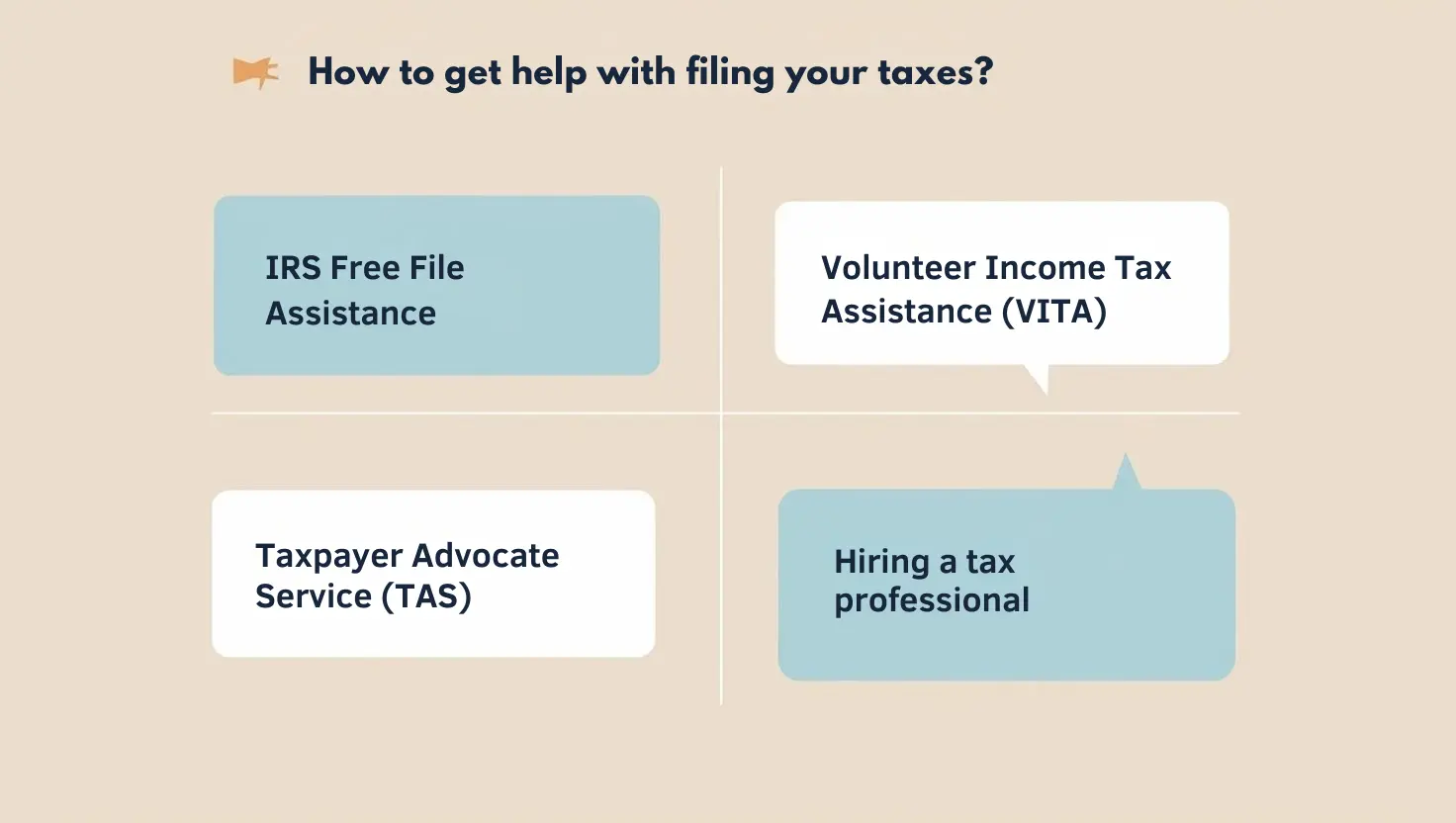
IRS Free File Assistance
The IRS Free File program provides two options for free tax preparation:
- Guided Tax Software: Taxpayers with an Adjusted Gross Income (AGI) of \$84,000 or less can use guided tax preparation software from IRS partners. This software uses a question-and-answer format to guide you through the process.
- Fillable Forms: Those with an AGI over \$84,000 can use electronic versions of IRS paper forms. This option is best for those comfortable preparing their own taxes.
You can access IRS Free File through the IRS website. Make sure to access the IRS Free File program through the IRS website, as you won’t get the free service if you go directly to a company’s website.
Volunteer Income Tax Assistance (VITA)
The Volunteer Income Tax Assistance (VITA) program offers free tax help to those who qualify. You may qualify if you make \$67,000 a year or less, have a disability, or speak limited English. VITA volunteers are IRS-certified and can help you understand tax credits and prepare basic tax returns. Use the VITA/TCE Locator Tool to find a provider near you.
Taxpayer Advocate Service (for IRS-related disputes)
The search results provided do not contain information about the Taxpayer Advocate Service.
Hiring a Tax Professional (CPA, Enrolled Agent, Tax Attorney)
The search results provided do not contain information about hiring a tax professional.
Future of Online Tax Filing: Trends & Innovations
The landscape of online tax filing is rapidly evolving, driven by technological advancements and a focus on improving user experience. Several key trends and innovations are shaping the future of how individuals and businesses will approach tax preparation and filing.
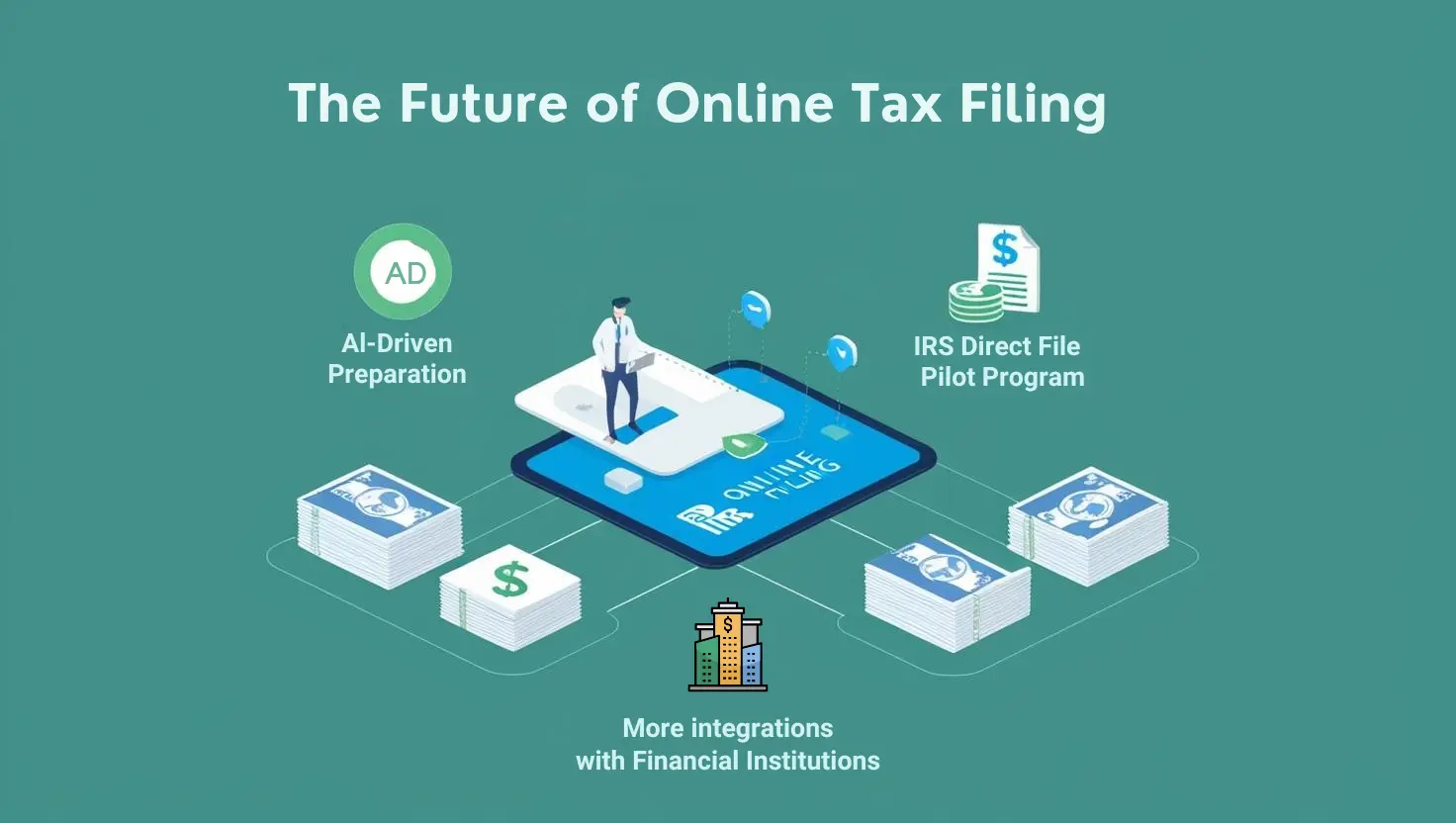
AI-Driven Tax Preparation Tools
Artificial intelligence (AI) is increasingly playing a significant role in tax preparation. AI-powered tax preparation tools can automate many tasks, analyze large amounts of financial data, interpret tax laws and regulations, and identify potential compliance gaps. These tools leverage technologies like Natural Language Processing (NLP) and Optical Character Recognition (OCR) to extract data from financial documents, understand complex tax laws, and provide accurate answers. AI tax assistants can draft tax memos, respond to IRS notices, and handle client communications, streamlining workflows. Companies like Intuit are already using AI to connect filers with experts and maximize refunds. AI is also being used to provide personalized explanations throughout the filing process.
IRS Direct File Pilot Program
The IRS Direct File program is an important innovation [Search results do not contain information about IRS Direct File pilot program].
More Integrations with Financial Institutions
Improved integration with financial institutions is streamlining data input and reducing manual entry. Tax software increasingly supports document import from various financial institutions, allowing customers to automatically enter their data and minimize manual effort.
These trends collectively point toward a future of online tax filing that is more efficient, accurate, and user-friendly, leveraging AI and enhanced integrations to simplify the tax preparation process.
Conclusion: Filing Your Taxes with Confidence
E-filing your taxes doesn’t have to be a daunting task. By following the steps outlined in this guide, you can navigate the process efficiently and accurately, ensuring compliance with IRS regulations and maximizing potential refunds.
- Summary of Key Points: We’ve covered everything from gathering necessary documents and choosing the right filing method to understanding deductions and credits, tracking your refund, and addressing potential errors.
- Encouragement to File Early and Avoid Last-Minute Stress: Filing your taxes early in the tax season provides several benefits. You’ll have more time to gather necessary documents, review your return for accuracy, and avoid the stress of rushing to meet the April 15 deadline. Filing early also reduces the risk of identity theft and refund fraud.
- Final Tips for a Smooth Tax Filing Experience:
- Double-check all entries: Ensure that names, Social Security numbers, and financial information are accurate.
- Keep records of your return: Save a copy of your filed return and all supporting documentation for at least three years.
- Stay informed: Keep up-to-date with tax law changes and IRS updates.
With careful preparation and attention to detail, you can approach tax season with confidence, knowing you’ve taken the necessary steps to file your taxes accurately and on time.
